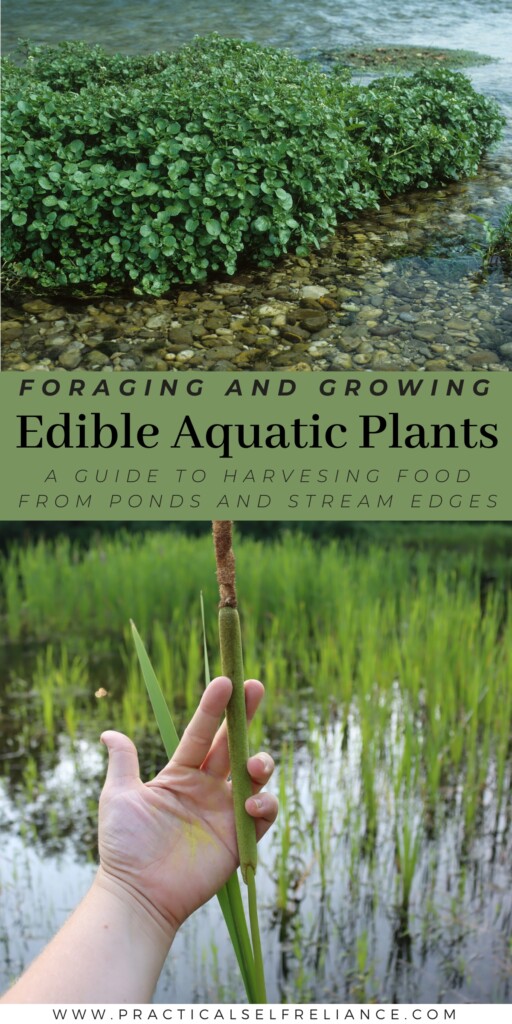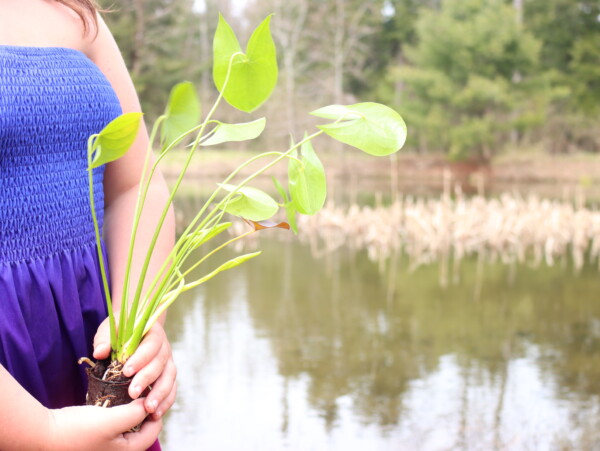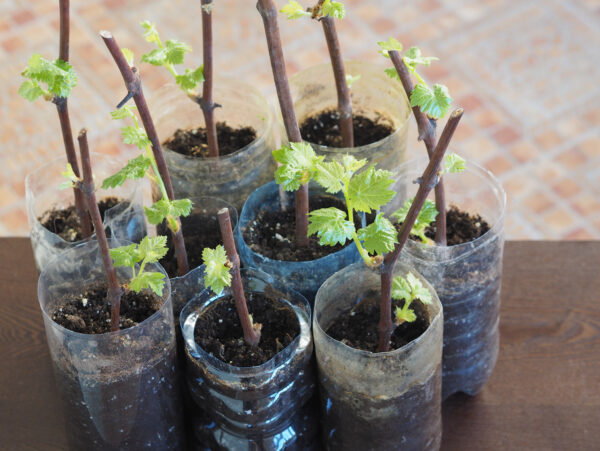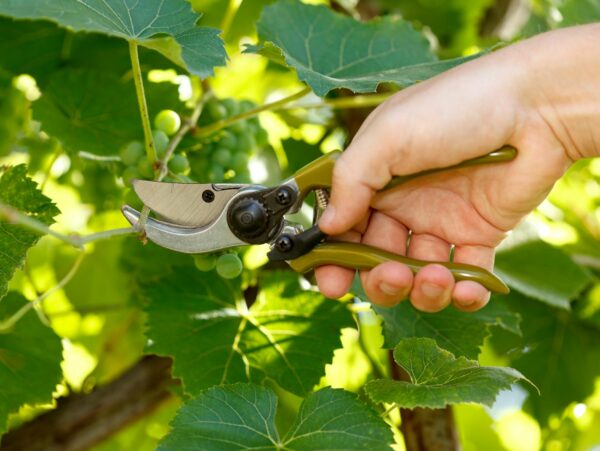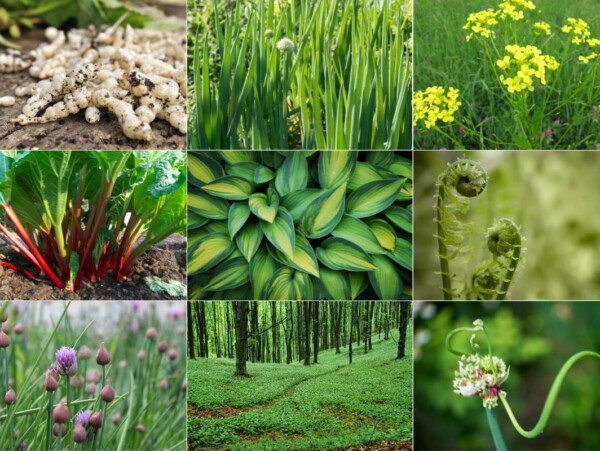Affiliate disclosure: This post may contain affiliate links. Please see our Privacy Policy.
Edible aquatic plants are a valuable, often overlooked source of nutrition, whether you’re foraging in the wild or growing them in a homestead pond. From starchy roots like duck potato to tender greens like watercress, these plants offer both food and ecological benefits. Learning to identify, harvest, and grow edible water plants connects you more deeply to the land and provides a resilient, renewable food source.
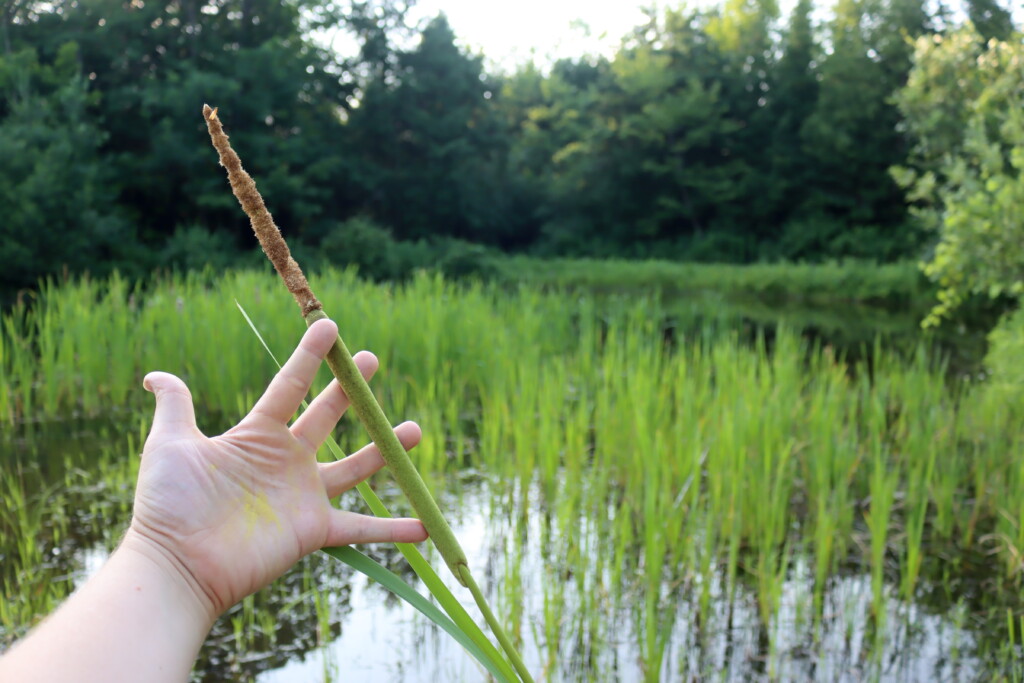
Table of Contents
- Why Edible Aquatic Plants Matter
- Edible Water Plants
- Best Edible Emergent Pond Plants
- Best Edible Floating and Submerged Pond Plants
- Best Edible Shallow and Edge Water Plants
- Plants to Avoid When Growing or Foraging Edible Aquatic Plants
- Tips for Water Plants
- FAQ About Edible Pond Plants
- Homestead Pond Resources
Aquatic plants have nourished people for centuries, offering abundant food from lakes, streams, wetlands, and backyard ponds alike. Whether you’re managing a homestead pond for self-sufficiency or foraging wild plants in natural waterways, edible aquatic species can be a reliable, nutrient-rich part of your food supply. Many are resilient, easy to harvest, and packed with minerals, fiber, and carbohydrates — making them valuable both in everyday meals and survival situations.
Planting a pond for food or learning to recognize wild edible water plants is about more than adding greenery — it’s about building a deeper connection with the landscape and tapping into time-tested sources of nourishment. These plants not only feed people, but also stabilize banks, support wildlife, and help purify water naturally.
I’ll walk through the best edible aquatic plants to grow in homestead ponds and to forage responsibly in the wild, including emergent, floating, and submerged species that offer both food and ecological benefits.
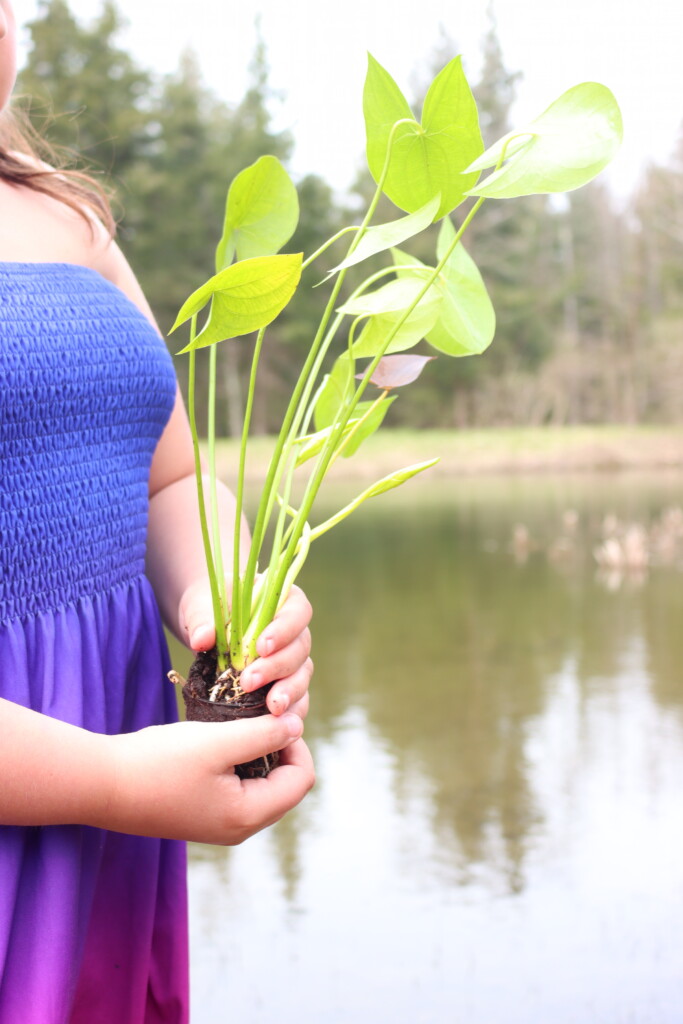
Why Edible Aquatic Plants Matter
Edible aquatic plants have nourished people and wildlife for generations, offering food security directly from ponds, lakes, rivers, and wetlands. Whether you’re planting a homestead pond or harvesting wild plants, they provide a wide range of benefits:
- A steady source of fresh, nutritious food with minimal input once established.
- Natural stabilization of pond edges, stream banks, and wetlands, helping to prevent erosion.
- Improved water quality by filtering runoff and absorbing excess nutrients.
- Vital habitat and food for fish, ducks, amphibians, and beneficial insects.
- A resilient, seasonal food source that can help buffer against poor growing seasons, crop failures, or emergencies.
By adding edible aquatic plants to your pond — or learning to forage them responsibly — you turn overlooked waterways into a rich, renewable part of your food system while strengthening local ecosystems at the same time.
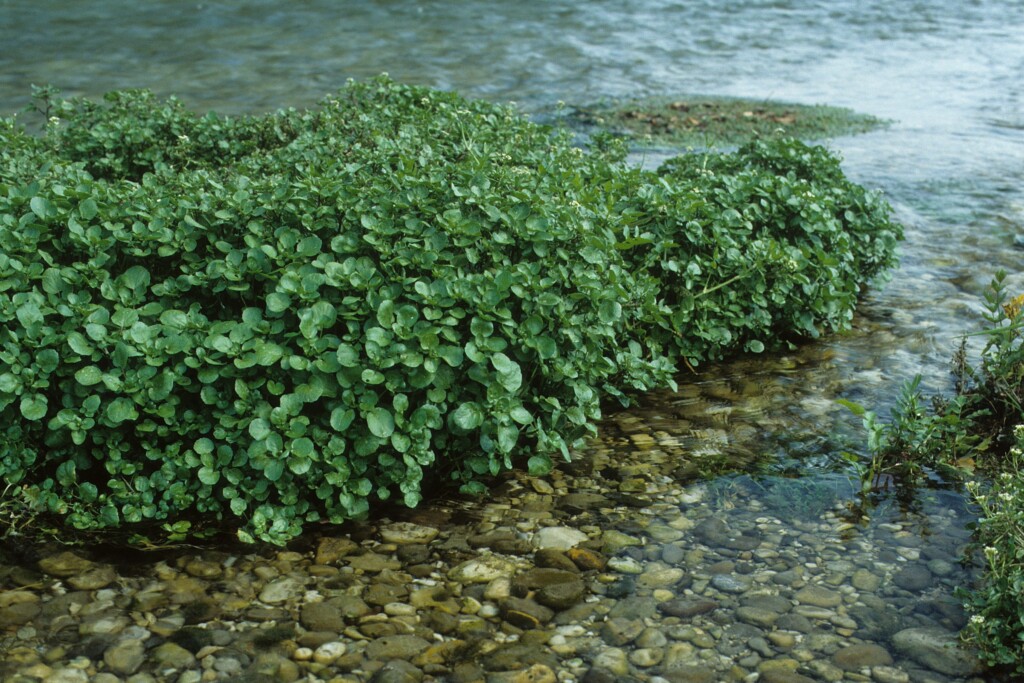
Edible Water Plants
Always positively identify wild aquatic plants before consuming them, and ensure they are harvested from clean, uncontaminated water sources. Many edible aquatic plants have look-alikes that are not safe to eat, and polluted water can introduce dangerous contaminants.
Best Edible Emergent Pond Plants
Emergent plants grow with their roots underwater but stems and leaves above the surface, making them easy to harvest and maintain.
Arrowhead (Sagittaria latifolia)
Arrowhead, often called “duck potato,” produces underground tubers that were once a staple food for Indigenous peoples. The starchy tubers are rich in carbohydrates and can be roasted, boiled, or baked like potatoes.
Arrowhead thrives in shallow pond margins, forming naturalized colonies that provide shelter for young fish and aquatic insects. It’s hardy, spreads moderately, and requires little care beyond occasional thinning. Both wildlife and homesteaders benefit from its presence.
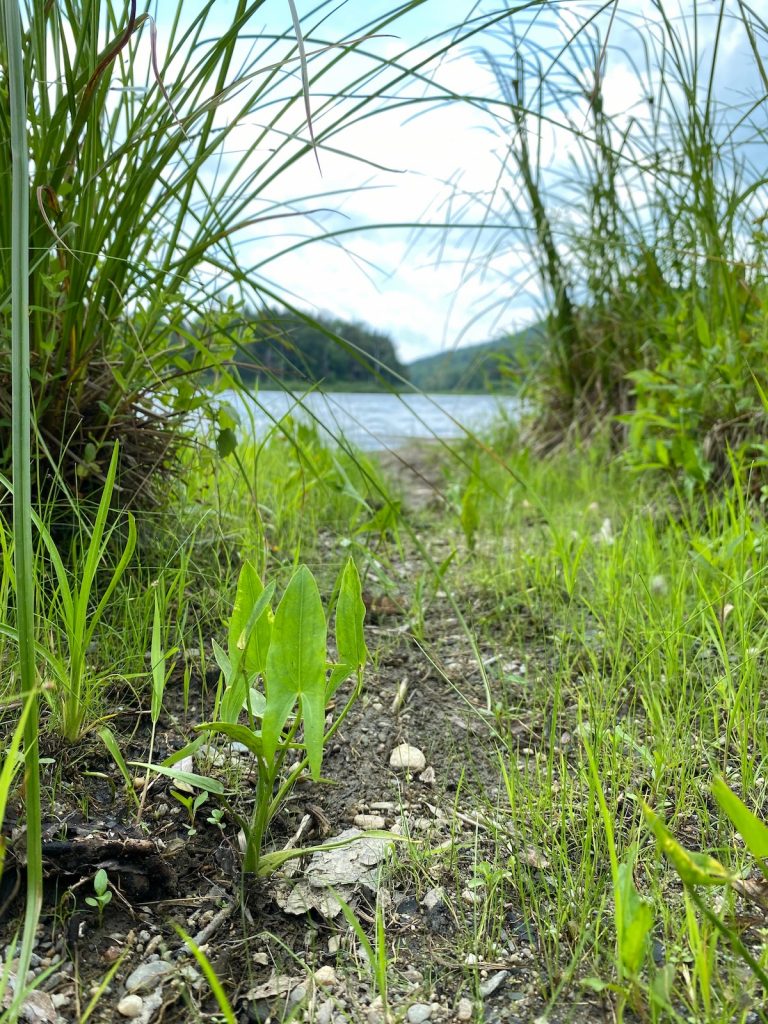
Cattails (Typha spp.)
Nearly every part of the cattail is edible at some point in the season — from tender spring shoots (known as “Cossack asparagus”) to pollen for flour and roots that can be roasted or ground into meal.
Cattails grow rapidly and stabilize pond edges but should be planted carefully, as they can spread aggressively. Controlled clumps offer ongoing harvests without overwhelming the pond. Besides human use, cattails are a vital resource for birds, amphibians, and wetland insects.
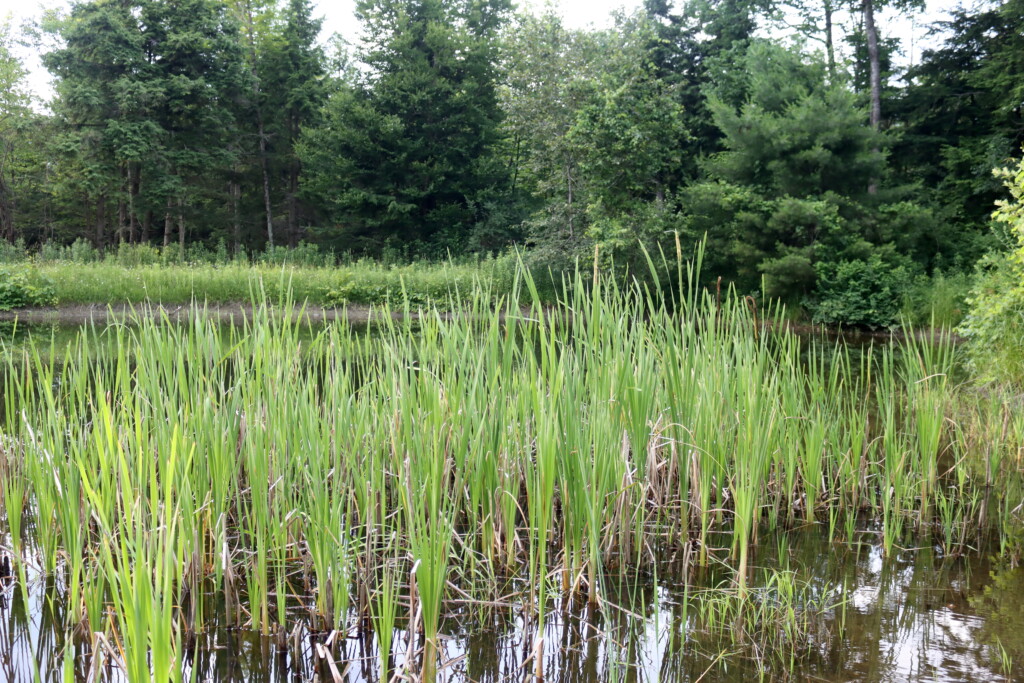
Pickerelweed (Pontederia cordata)
While best known for its stunning purple flower spikes that attract pollinators, pickerelweed also produces edible seeds. The seeds can be eaten raw when young or dried and ground into flour later in the season.
Pickerelweed grows in shallow pond edges and forms dense, manageable clumps. Its deep roots help filter water and stabilize shorelines, offering dual benefits of beauty and food production in small homestead ponds.
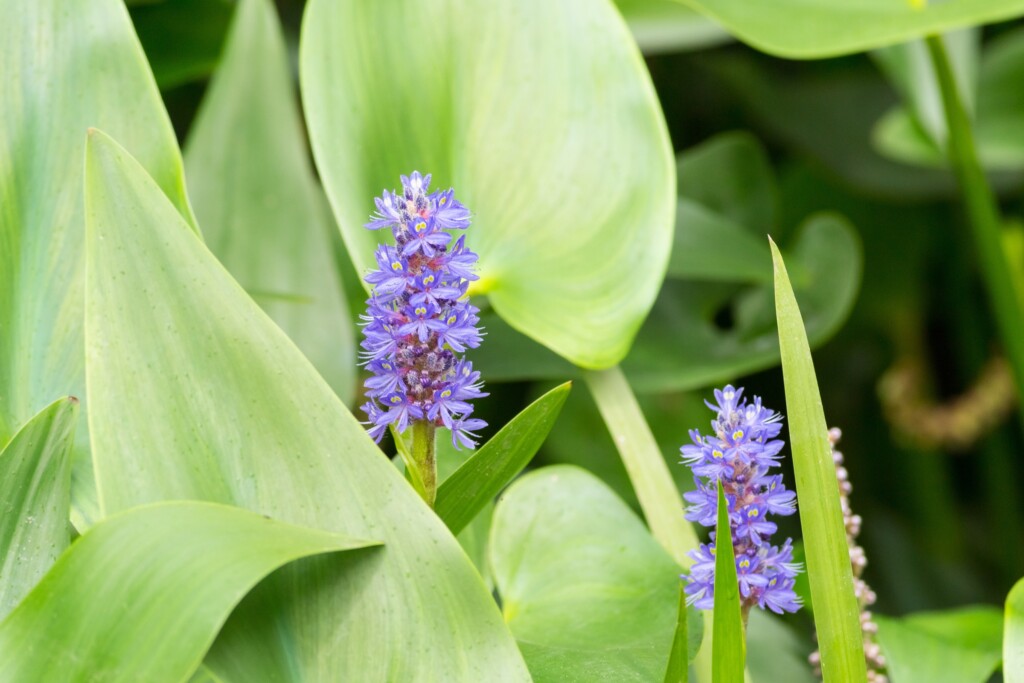
Best Edible Floating and Submerged Pond Plants
Floating and submerged plants help improve water quality and provide additional food opportunities, particularly for those interested in seasonal foraging.
Native American Lotus (Nelumbo lutea)
Native American lotus is prized for its edible seeds (“water nuts”) and starchy roots. Seeds can be eaten raw, roasted, or ground into flour, while the large tuberous roots can be cooked much like sweet potatoes or water chestnuts.
Lotus grows in shallow, sunny areas of the pond and spreads by rhizomes. Though it requires some management to prevent overgrowth, it adds shade, cools the water, and supports fish and aquatic insects — all while providing a unique and valuable food resource.
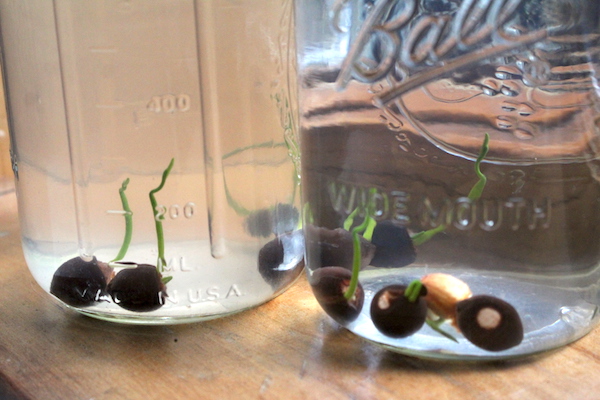
Wild Rice (Zizania palustris and Zizania aquatica)
Wild rice is a traditional staple food with high protein, fiber, and mineral content. It matures in late summer and can be harvested by canoe or manually from the shoreline if your pond is the right depth and size.
Wild rice grows best in quiet, shallow waters between 6 inches and 3 feet deep. It stabilizes pond bottoms, improves water quality, and supports ducks, geese, muskrats, and even fish. Reseeding may be needed occasionally to maintain strong stands.
Only fresh “green” wild rice intended for planting will germinate — dried commercial wild rice won’t sprout.
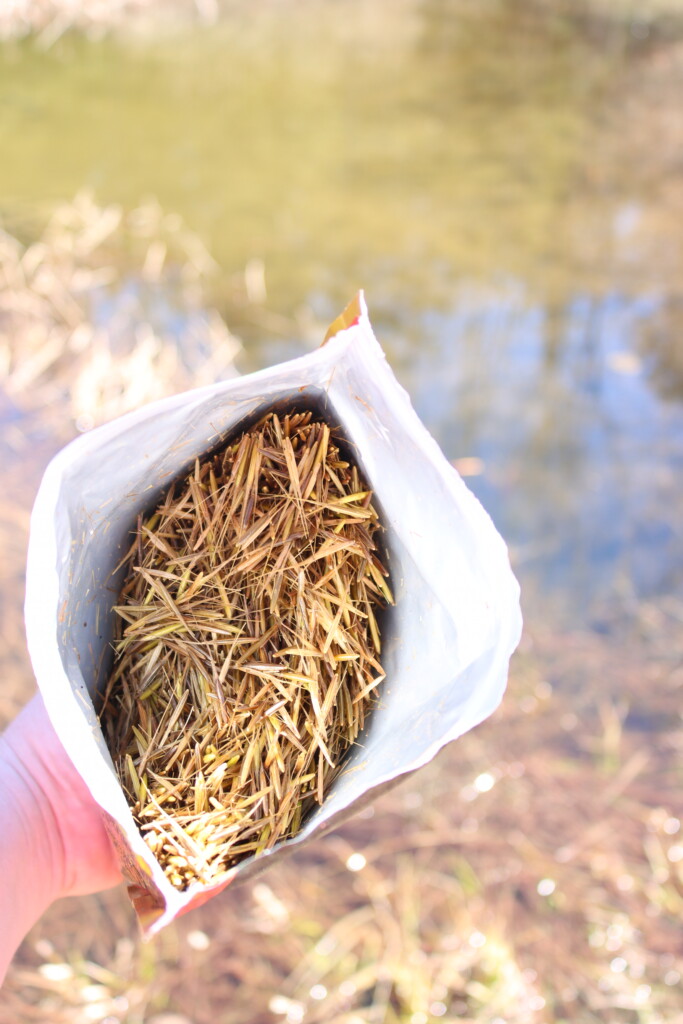
Best Edible Shallow and Edge Water Plants
It’s often easier to harvest plants that are growing near water, rather than directly in it. These thrive in shallow water, bogs or pond edges.
Asiatic Pennywort (Centella asiatica)
Known in herbal traditions for its health benefits, Asiatic pennywort produces edible leaves often used in teas, salads, and medicinal preparations for skin health and circulation.
Pennywort grows in wet soils and shallow water, creeping along moist ground. It is a vigorous grower but manageable with regular harvesting.
In addition to being edible, Asiatic pennywort provides low-growing ground cover that reduces erosion around pond margins and keeps soil moisture consistent.
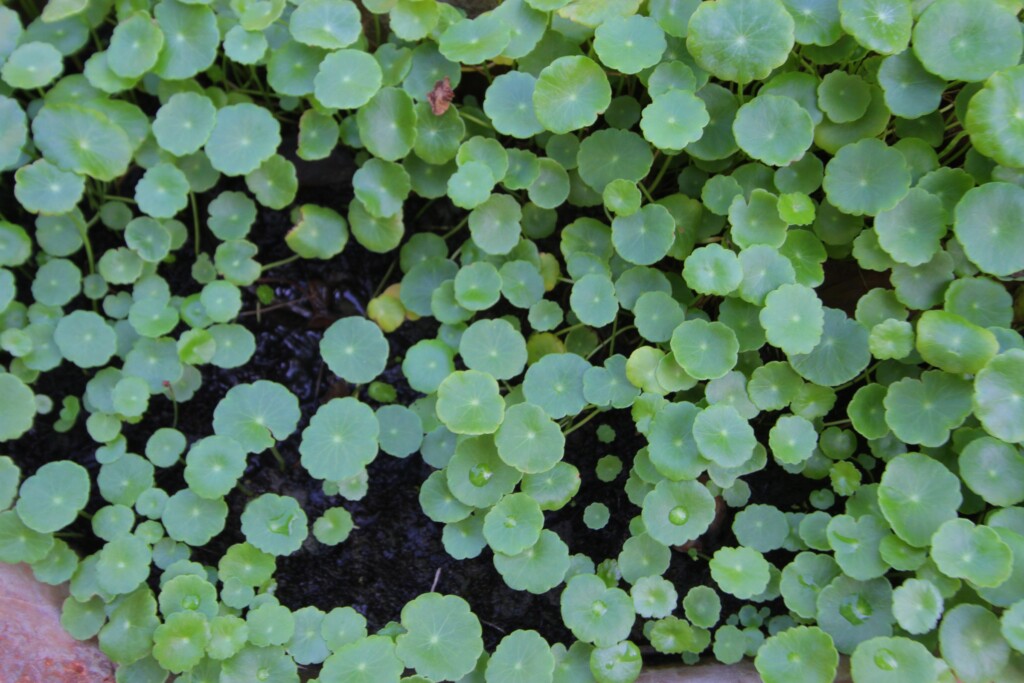
Calmus or Sweet Flag (Acorus calamus)
Sweet flag is a fragrant aquatic plant known for its edible rhizomes, which can be candied or used medicinally. It has a long history in herbal medicine and is considered mildly aromatic and stimulating.
It thrives in shallow water or saturated soils along pond margins, forming slow-growing clumps. Sweet flag is relatively easy to manage and rarely becomes invasive.
Besides its edible roots, Sweet flag helps stabilize muddy pond edges and acts as a mild natural mosquito deterrent when planted in masses.
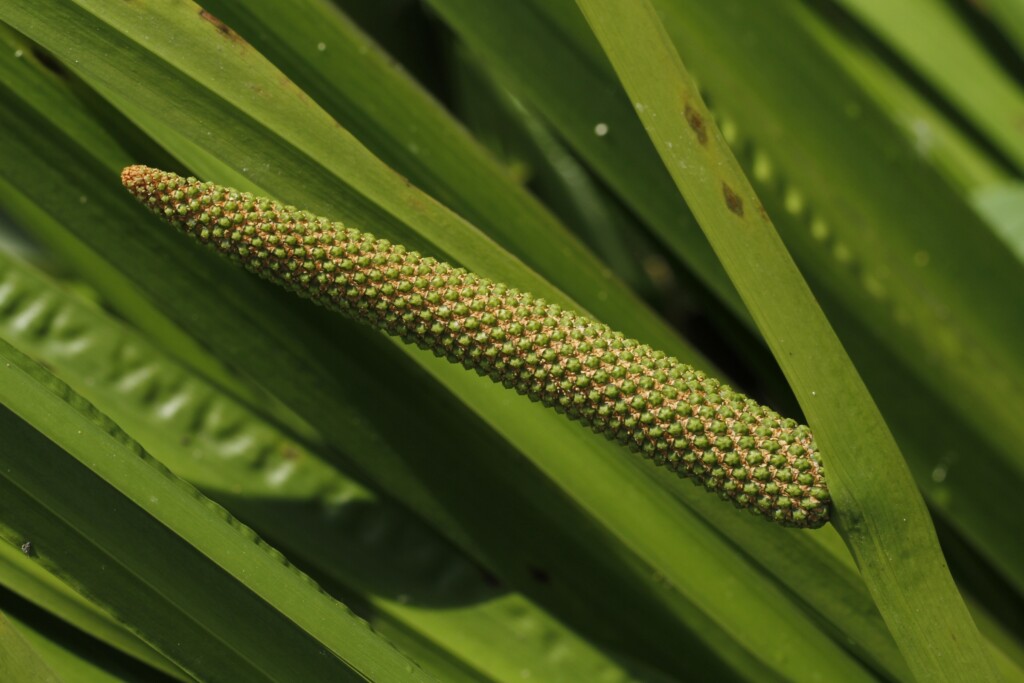
Flowering Rush (Butomus umbellatus)
The rhizomes and young shoots of Flowering Rush are edible when cooked, although the plant is more famous for its beautiful umbrella-shaped clusters of pink flowers.
Flowering Rush grows best in shallow pond margins or slow-moving waters. It spreads slowly and is generally manageable, forming ornamental clumps.
In addition to its edible roots, Flowering Rush provides stunning summer blooms that attract pollinators and beautify pond edges naturally.
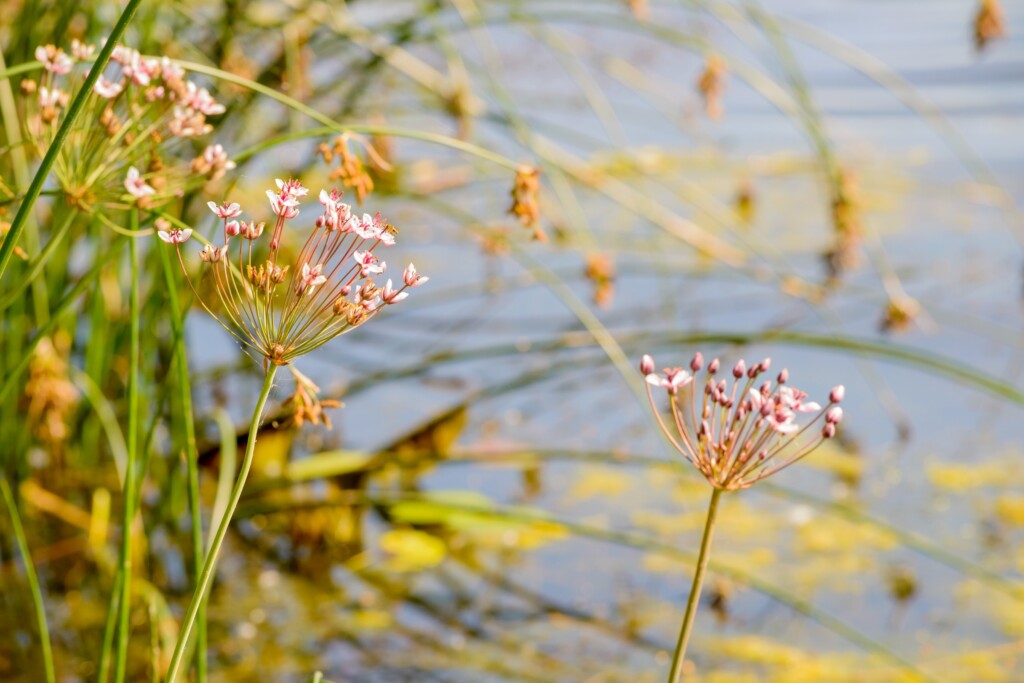
Watercress (Nasturtium officinale)
Watercress is a fast-growing, nutrient-dense edible green, high in vitamin C and antioxidants. It’s delicious in salads, sandwiches, or soups and has been valued for centuries as a spring tonic.
Watercress thrives in clean, cool, shallow flowing water. It can be planted at pond outflows, spring-fed areas, or constructed water channels. It grows vigorously and may need occasional thinning.
A natural biofilter, Watercress improves water quality while providing a continual harvest of fresh greens throughout the growing season.
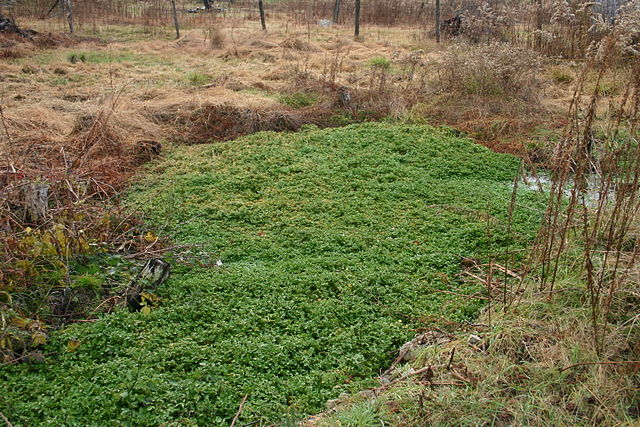
Water Mint (Mentha aquatica)
Water mint offers aromatic leaves that can be used fresh in teas, desserts, sauces, and more. Like other mint species, it has digestive benefits and a refreshing flavor.
Water mint thrives in wet soils and shallow water. It spreads by rhizomes and runners, so it’s best planted where it can be contained, either naturally or with barriers.
The fragrant purple flowers attract bees, butterflies, and other pollinators, supporting overall pond biodiversity while offering a continual supply of fresh mint leaves.
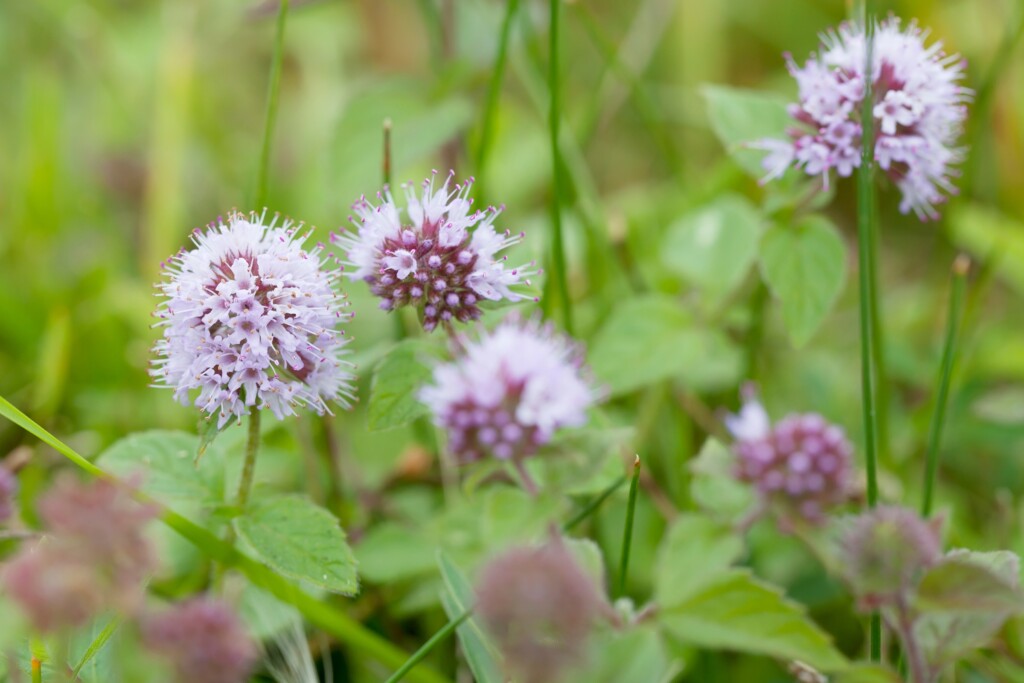
Plants to Avoid When Growing or Foraging Edible Aquatic Plants
While many aquatic plants are valuable food sources, not every plant growing in ponds, lakes, or wetlands is safe — or even beneficial — to harvest or cultivate. Some species are highly invasive, while others are dangerously toxic.
- Water Hemlock (Cicuta spp.): One of the most poisonous plants in North America, water hemlock grows in wet meadows, pond edges, and marshy areas. It has clusters of small white flowers and hollow, often purple-streaked stems. Consuming even a small amount can cause seizures and death. Always be 100% certain of your plant identification — water hemlock is easily confused with edible wild plants like water parsnip or wild celery.
- Water Hyacinth (Eichhornia crassipes): An invasive species in many regions, water hyacinth grows rapidly, clogs waterways, and is illegal to plant in several states. It’s not an edible species and should always be avoided.
- Eurasian Watermilfoil (Myriophyllum spicatum): A highly aggressive underwater plant that spreads quickly and disrupts native ecosystems. While it’s edible to some aquatic animals, it is not a traditional human food plant and is problematic to control once established.
- Non-Native Lotus Hybrids:While the native American lotus is an excellent edible plant, many ornamental lotus hybrids are bred for appearance rather than resilience and may spread aggressively, crowding out native vegetation and complicating wild ecosystems.
Whether foraging or planting, it’s best to stick to native, proven edible species that support a healthy environment. Responsible choices ensure sustainable harvests, healthy ponds, and thriving natural waterways.
Tips for Water Plants
Whether you’re cultivating a food pond at home or gathering wild plants from natural waterways, a few careful strategies can make a big difference:
- Monitor growth and harvest sustainably:In ponds, manage spreaders like cattails and lotus to protect open water areas. In the wild, harvest responsibly — never take more than you need, and leave enough for wildlife and plant regeneration.
- Choose a mix of plant types:Emergent, floating, and submerged edible plants each support different parts of the ecosystem and provide varied harvests.
- Plant or harvest at the right time:Spring and early summer are ideal for establishing edible aquatic plants in ponds. If foraging, spring is best for tender shoots, while late summer to fall is ideal for tubers and seeds.
- Match the plant to the habitat: Lotus and wild rice thrive in shallow open water, while arrowhead and cattails prefer muddy pond margins or marshy ground.
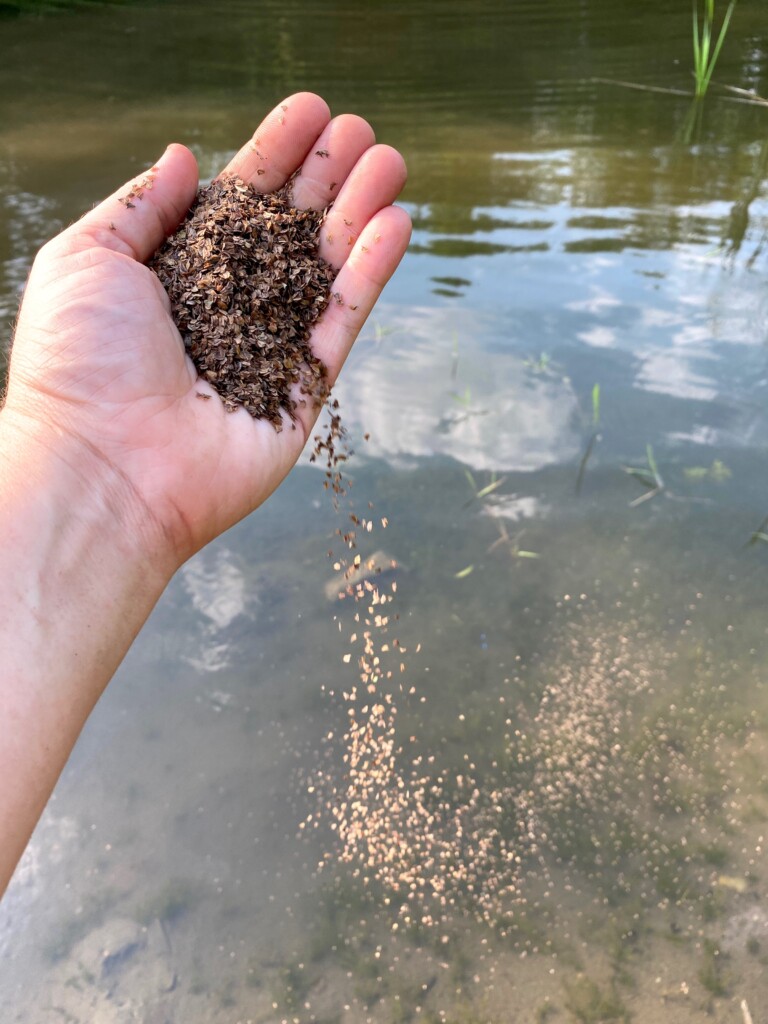
With a little planning and care, edible aquatic plants can provide an ongoing, renewable food source that also strengthens natural ecosystems.
Adding edible aquatic plants to your pond — or learning to forage them responsibly in the wild — increases both your food security and your connection to the landscape. These hardy, beautiful plants stabilize banks, filter water, support wildlife, and provide nourishing, seasonal harvests with minimal maintenance.
Whether you’re tending a backyard pond or wading into a wild marsh, each season brings new opportunities to harvest food directly from the water. With careful planting, sustainable harvesting, and a little patience, edible aquatic plants can become an enduring part of your homestead or wild foraging traditions.
FAQ About Edible Pond Plants
No, not all aquatic plants are edible. Some species are toxic or difficult to digest. Always positively identify plants before harvesting, and avoid collecting from areas with polluted water, such as roadside ditches, industrial sites, or agricultural runoff zones.
It depends on the species. Spring is best for young shoots like cattails and watercress. Late summer to fall is ideal for harvesting seeds (like lotus and pickerelweed) and mature tubers (like arrowhead and wild rice). Harvest plants at their peak for the best flavor and nutrition.
Only forage from clean, flowing, or spring-fed water sources. Avoid stagnant ponds, urban waterways, and areas downstream of agricultural or industrial runoff. Washing harvested plants thoroughly in clean water before use is essential.
Yes! Plants like pickerelweed, lotus, and watercress stabilize soil, filter runoff, and provide oxygen. They improve water clarity and reduce algae growth while also offering habitat for fish, amphibians, and beneficial insects.
Yes! Many edible aquatic plants, like duck potato, cattails, and watercress, can be easily grown in homestead ponds, water gardens, or even shallow tubs. Providing clean water, appropriate depth, and enough sunlight is key to healthy growth and safe harvesting.
Some species like cattails and lotus can spread vigorously if not managed. Plant them in controlled areas and thin them periodically to maintain healthy balance.
Spring and early summer are ideal for planting most aquatic edibles. This gives plants the full growing season to establish before winter.
Yes, many native aquatic plants are edible and highly nutritious. However, proper identification is essential — only harvest known edible species, and avoid plants from polluted waters.
Keep about 20–30% of the pond edges and shallow zones planted with edible species to balance food production with healthy open water space for fish and wildlife.
Homestead Pond Resources
Looking for more ways to make your pond productive and healthy? Check out these helpful guides:
How to Maintain a Homestead Pond — Learn how to care for water quality, aeration, and fish populations year-round.
How to Stock a Pond — Build a balanced ecosystem that supports fish, wildlife, and natural food webs.
Best Plants for Homestead Ponds — Discover the essential plants that keep your pond clean, healthy, and thriving.
Building a strong, multi-purpose pond today lays the groundwork for a more self-sufficient homestead tomorrow.
